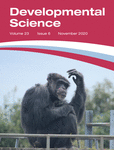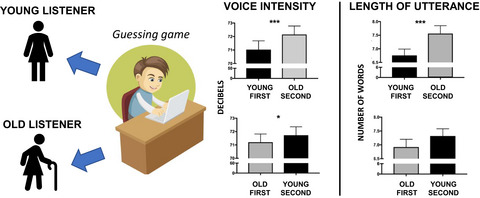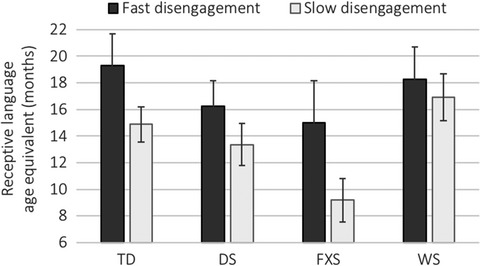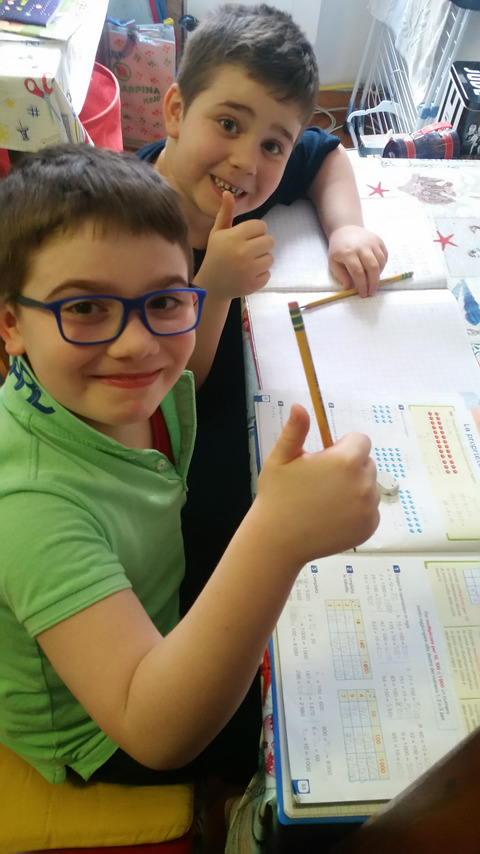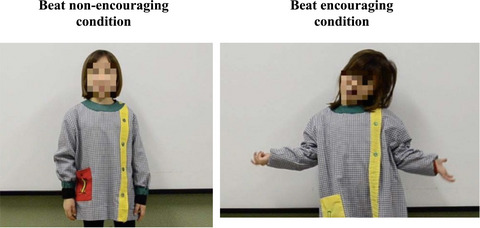Journal list menu
Export Citations
Download PDFs
COVER IMAGE
Cover Image
- First Published: 29 October 2020

The cover image is based on the Original Article How chimpanzees and children perceive other species’ bodies: comparing the expert effect by Jie Gao and Masaki Tomonaga., https://doi.org/10.1111/desc.12975.
ISSUE INFORMATION
PAPERS
Subcortical auditory neural synchronization is deficient in pre-reading children who develop dyslexia
- First Published: 08 February 2020

Our study demonstrates that children who develop dyslexia (DYS+) differ from typically developing children (FRD-DYS-) with regard to subcortical neural synchronization (80 Hz ASSRs) prior to reading instruction. The inability to synchronize subcortical activity thus seems to predispose certain children to the development of dyslexia.
Maximizing research on the adverse effects of child poverty through consensus measures
- First Published: 09 February 2020
Research on child poverty employs a variety of different indices of poverty, making it difficult to contrast and reconcile findings across studies. This Open Access paper provides a small set of brief key variables to assess socio-economic status and family income, allowing studies to be directly compared. This measure can be used to make direct comparisons between studies and better enable diversity of subjects and aggregation of data regarding many facets of poverty that would be difficult within any single study.
Development of neural oscillatory activity in response to speech in children from 4 to 6 years old
- First Published: 11 February 2020

Our longitudinal study is the first to reveal that neural phase entrainment to the delta components of speech already occurs at four years of age. Moreover, we show that, at seven years of age, delta speech-brain entrainment is still bilateral, suggesting that right-hemispheric specialisation for the perception of speech slow components is not in place.
Functional near-infrared spectroscopy in toddlers: Neural differentiation of communicative cues and relation to future language abilities
- First Published: 11 February 2020

Changes in blood oxygenation in the frontal lobe varied in toddlers depending on whether they saw gestures or heard speech, and depending on whether those gestures or speech were meaningful or nonmeaningful. This varied between 2- and 3-year-olds, and for 2-year-olds, predicted later language measures.
Orthographic consistency influences morphological processing in reading aloud: Evidence from a cross-linguistic study
- First Published: 15 February 2020
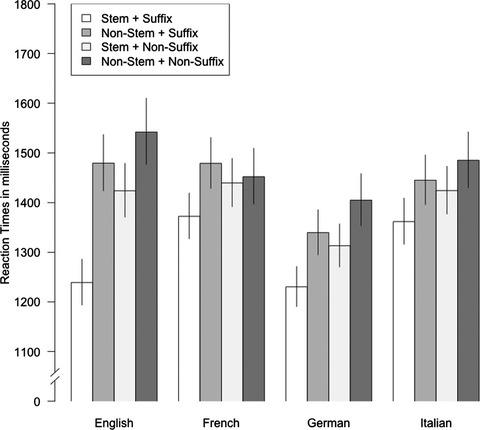
Developing readers of four alphabetic orthographies (i.e. English, French, German, Italian) read aloud morphologically structured and non-morphologically structured nonwords. English is the least consistent language, in terms of its spelling-to-sound relationships, and the most morphologically sparse, compared to the other three. English readers showed greater morphological processing than readers of the other three languages, which suggests that the orthographic consistency of a language, and not its morphological complexity, influences the extent to which morphology is used in reading.
The developing predictive brain: How implicit temporal expectancy induced by local and global prediction shapes action preparation across development
- First Published: 20 February 2020
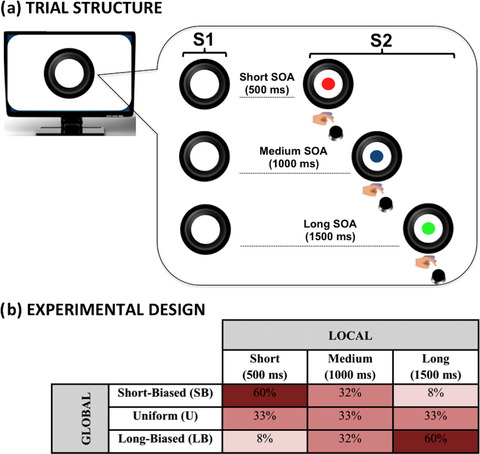
Dynamic temporal prediction (DTP) task. The DTP task is a simple, warned reaction time task purposely designed to investigate the implicit cognitive flexibility induced by the transition between local (within-trial expectancy) and global (between-block probabilistic rules overcoming local transitions) predictive contexts.
On the domain specificity of the mechanisms underpinning spontaneous anticipatory looks in false-belief tasks
- First Published: 27 February 2020

We investigated whether domain general processes such as memory interference can account for infants' and adults' anticipatory looks in a false belief task. In our agent condition, participants were shown short animations of an agent triangle chasing a disk. In a control condition, they were shown a stimulus involving an inert triangle held by a hand. In contrast with domain general accounts of anticipatory looks, both infants and adults showed a reliable bias toward the belief congruent location in the agent condition and they showed no bias in the control condition.
Predictors of mathematics in primary school: Magnitude comparison, verbal and spatial working memory measures
- First Published: 29 February 2020
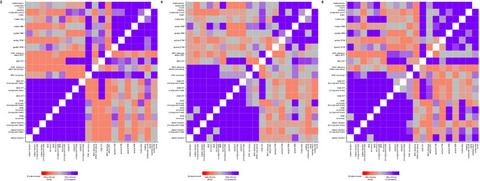
Evidence from Bayesian analyses suggests that symbolic number comparison accuracy and spatial working memory were specific predictors of math achievement and symbolic number comparison reaction time and verbal memory were predictors of both reading and math. Approximate number system measures were not reliable predictors of math.
Speech accommodation toward older people in 7- To 12-year-old children
- First Published: 06 March 2020
One language or two? Navigating cross-language conflict in statistical word segmentation
- First Published: 07 March 2020
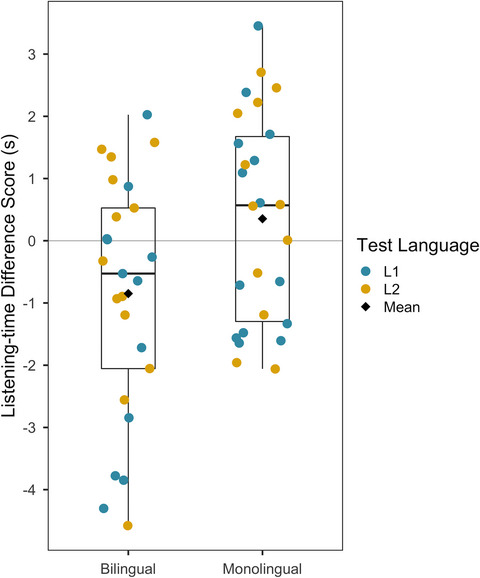
We assessed monolingual and bilingual infants' abilities to segment dual speech streams using syllable co-occurence cues despite syllable overlap. We found that bilinguals, but not monolinguals, successfully segmented the speech and that bilinguals' language environments were associated with their performance.
Attentional abilities constrain language development: A cross-syndrome infant/toddler study
- First Published: 10 March 2020
(Un)common knowledge: Children use social relationships to determine who knows what
- First Published: 11 March 2020
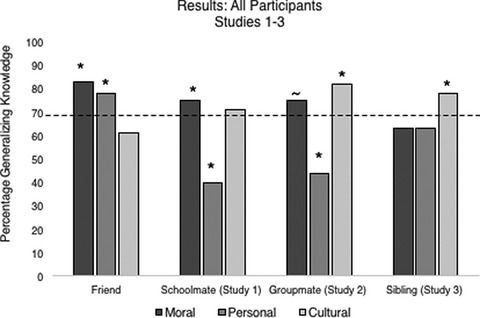
Tracking people's knowledge can be challenging for children. We find evidence that children use social relationships when making inferences about knowledge. Specifically, children expect friends to have shared personal knowledge (e.g., secrets), and expect siblings and members of a national group to have shared cultural knowledge (e.g., how to celebrate a holiday). Moreover, with age, children become increasingly likely to consider both the type of relationship and the type of knowledge when determining who knows what.
When slowing down processing helps learning: Lexico-semantic structure supports retention, but interferes with disambiguation of novel object-label mappings
- First Published: 11 March 2020
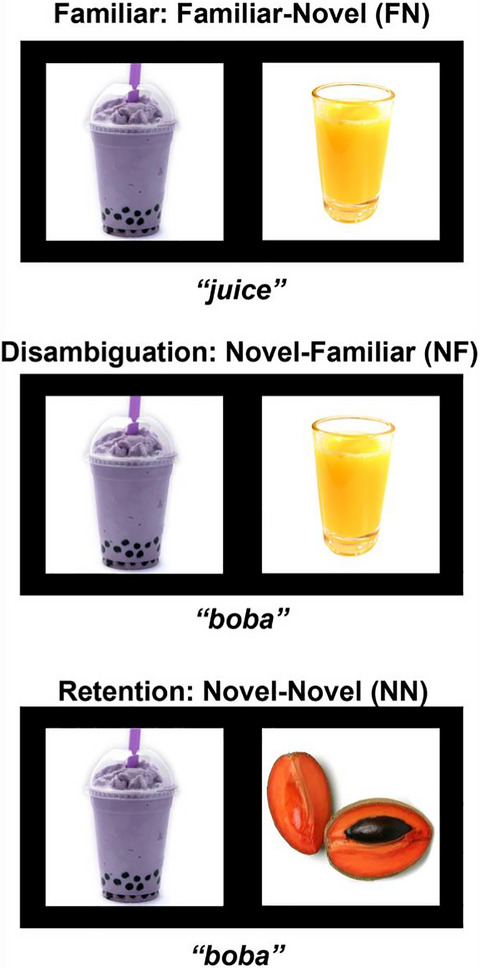
Does learning about a novel word in the context of other semantically similar known objects confuse or support young word learnings? The study explores this question by pairing novel (i.e unfamiliar) words (like boba) with known ones (like juice, see Fig) and asking how 2-year-olds retain these words during a later test. The findings suggest that although children might not initially identify the appropriate word during the learning (disambiguation) trials, that having a denser network of semantically similar words supports later retention.
Math anxiety and math achievement: The effects of emotional and math strategy training
- First Published: 11 March 2020
Development of rapid word–object associations in relation to expressive vocabulary: Shared commonalities in infants and toddlers with and without Williams syndrome
- First Published: 20 March 2020

The relation between expressive vocabulary (EV) and the development of early word–object associations was investigated in TD infants and infants and toddlers with Williams syndrome (WS), a rare genetic disorder associated with delayed language and cognitive development. Eleven- to 14-month-old TD infants and 12- to 35-month-olds with WS were divided into small and large EV groups and tested on a “switch” task using phonetically dissimilar words and novel objects. Across both populations, the results were similar: infants in the small EV group processed the novel object, while infants in the large EV group processed the words, objects, and the word-object links (as tested with the switch trial).
Encouraging kids to beat: Children's beat gesture production boosts their narrative performance
- First Published: 28 March 2020
Off to a good start: Early Spanish-language processing efficiency supports Spanish- and English-language outcomes at 4½ years in sequential bilinguals
- First Published: 22 April 2020

In Spanish-English sequential bilingual children, we demonstrate that speed of language processing in Spanish at 2 years is uniquely linked to both Spanish- and English-language outcomes at 4 ½ years. Strong native-language real-time processing abilities early in development reflect skills that support later learning in both a native language and a second language.
How chimpanzees and children perceive other species’ bodies: Comparing the expert effect
- First Published: 24 April 2020

This study investigated the evolutionary and developmental aspects of body perception. Chimpanzees show the inversion effect to their conspecifics, and we found their inversion effect to bodies of other species, with which they have visual or embodied experience. We report the body inversion effect in children for the first time. They also show the inversion effect to other species, suggesting the role of experience in shaping visual perception.
Screen-time influences children's mental imagery performance
- First Published: 30 April 2020
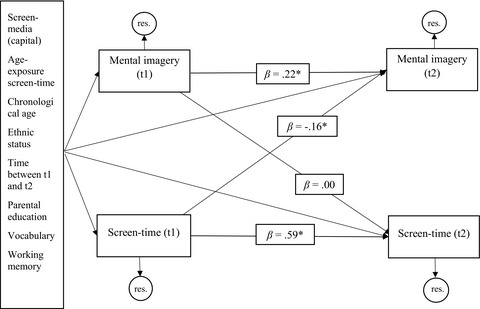
Mental imagery involves the inner assembly of external experiences and events, to then behold these in front of our ‘inner eye’. Screen-media do much of this work for us by providing us with ready-made images. Accordlingy, children who spend more time with screens show reduced mental imagery performance.
Understanding the terrible twos: A longitudinal investigation of the impact of early executive function and parent–child interactions
- First Published: 30 April 2020
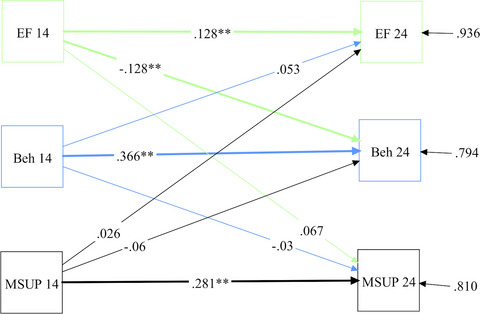
This longitudinal study examines the unique influences of executive function and maternal support at 14 months on externalizing behavior at 24 months. Cross-lagged analysis show that poor executive function at 14 months predicts externalizing behaviors at 24 months (but not vice versa). High levels of maternal support at 14 months predict reduced externalizing behaviors at 24 months among infants with low levels of negative affect.
SHORT REPORTS
Neurofeedback trains a superordinate system relevant for seemingly opposing behavioral control deficits depending on ADHD subtype
- First Published: 27 February 2020
Changes in working memory influence the transition from reactive to proactive cognitive control during childhood
- First Published: 06 March 2020

Cognitive control develops rapidly during childhood, with a dominant change being a transition from ‘as-needed’ control (reactive control) to planful control (proactive control). This study shows that working memory, above and beyond other executive functions, is critical for the enactment of proactive control during childhood. In addition, we show memory-related neural activity (P3b) links working memory ability and proactive control strategy use. Together, these data suggest that neurocognitive developments in working memory may influence adopting a more mature, and adaptive, proactive cognitive control strategy.
The gaze bias effect in toddlers: Preliminary evidence for the developmental study of visual decision-making
- First Published: 04 April 2020
The intergenerational transmission of mathematics achievement in middle childhood: A prospective adoption design
- First Published: 23 April 2020
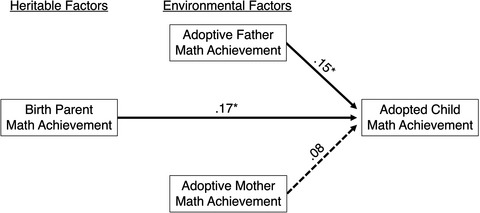
We investigated the intergenerational transmission of mathematics achievement using a prospective adoption design. Results indicate that heritable (i.e., birth parent mathematics achievement scores) and environmental (i.e., adoptive father, but not mother, mathematics achievement scores) factors contribute to mathematics achievement in middle childhood.
Infants of mothers with higher physiological stress show alterations in brain function
- First Published: 23 April 2020

Infants of mothers with evidence of higher physiological stress showed increased relative low-frequency (theta) power and reduced relative high-frequency (alpha, high-gamma) power, compared to infants of mothers with evidence of low physiological stress. These findings are consistent with a maturational lag in brain development. Maturational lags can be long-lasting and are associated with deficits in cognitive and emotional development.




